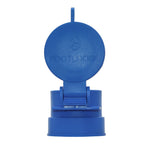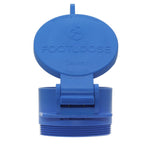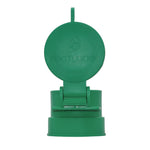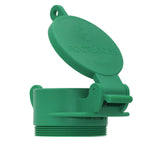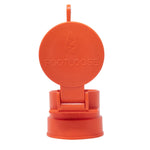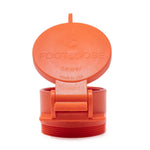You have no items in your shopping cart.
A slab leak can cause a lot of water damage in a short time and is one of homeowners’ worst nightmares. Knowing what it is, how to recognize the signs of a slab leak, and the process of repairing it will help you contain the damage and handle the repair cost-effectively. Here’s what you need to know:
What Is a Slab Leak?
A slab is a concrete foundation on which some houses are built. Water and sewer lines often run below the slab. A slab leak happens when those lines break or deteriorate, releasing water or sewage under the building.
What Causes Slab Leaks?
Slab leaks can be caused by various factors, including faulty pipe installation, poor construction, weakened water lines, chemical reactions between metals in the earth and metals in the plumbing system, as well as shifting soil underneath the slab.
How Common Are Slab Leaks?
Slab leaks are more common in older homes that use copper or galvanized steel pipes, which are more prone to corrosion. They’re also more likely to happen when outside pressure impacts the lines—such as an earthquake, an underground stream, or soil erosion.
If you live in an area where the water is overly acidic or alkaline, your pipes are more likely to sustain damage. Also, debris in the water and sewage can cause abrasion that could eventually create leaks. Slab leaks are also more common around hot water pipes because they expand as they heat up, rubbing against the concrete to create friction that weakens the line.
What Are the Signs of a Slab Leak?
Catching a slab leak early on can save you time, money, and a lot of headaches. Wondering how to tell if you have a slab leak? Here are some slab leak symptoms to look out for:
- A raised “dome,” water stains, or warm spots on the floor.
- Foundation heaving caused by shifting or swelling soil.
- An increase in water or heating bills, as well as low water pressure.
- A running water meter even after all plumbing appliances are turned off.
- Running water sounds beneath the flooring and discolored floor covering.
- Dampness or cracks on walls, floors, and ceilings, as well as foul smells from floors or walls.
- Water puddles along the outside of the house, visible soil shifts around the building structure, or uneven growth in lawn or foundation plants.

How to Detect a Slab Leak
Signs such as warm spots or water stains on the floor can give you enough clues to pinpoint the location of a slab leak. When a leak can’t be readily located, professional plumbers can drain the water from the building’s water line and then pump in air to identify leaks.
If the leak comes from a hot water line, plumbers may use thermal imaging techniques to pinpoint the exact location of the issue. They can also use special sound equipment to detect the precise location of a leak.
How to Fix a Slab Leak
Fixing a slab water leak requires professional equipment and expertise. Here are the key steps:
Pinpoint the Leak’s Location
Before ripping up a concrete slab, you should be absolutely sure about the location of the leak. You can hire a plumber to pinpoint the location of the leak with the special equipment mentioned above so you can minimize the damage caused by breaking up the floor to access the pipes underneath.
Prepare for Hazardous Conditions
Ripping up the floor will result in a lot of dust. Your best bet is to remove furniture, paintings, rugs, electronics, and valuables from the room. Then, make sure you have protective gear such as gloves, goggles, a breathing mask, heavy-duty clothes, and steel-toe boots. It’s best to have an assistant who should also be wearing the appropriate safety gear.
Use the Right Equipment
To repair a slab leak, you’ll need to reach the area underneath the cement foundation using a jackhammer. This is a heavy-duty power tool that should only be handled by a trained operator, as it has the potential to cause bodily harm and unnecessary damage to the foundation. Seek help from a professional if you’re not equipped to handle this step.
After successfully excavating the under-the-slab pipes and identifying the source of the leak, you can start the repair process. If the leak comes from a sewage line, you should contact a professional plumber who can safely handle the potentially hazardous waste involved in sewage disposal and repair.
Consider Your Slab Leak Repair Options
There are different ways to repair a slab leak, depending on the location of the problem and the general condition of the pipes. Here are some common options:
- Spot repair is ideal for a single leak with relatively easy access. The process involves hacking through the concrete and repairing a short section of a leaking water pipe or sewer line. While this is a common solution for commercial plumbing (e.g., in warehouses), it could be costly and disruptive for homes because of the extensive restoration needed. Also, it isn’t a permanent solution if the lines are generally in poor condition, as it can only give you a temporary respite until the next leak happens.
- Re-piping or re-routing is often required by insurance companies for continued coverage. During this process, old plumbing is abandoned, and new pipes are re-routed around the outside edge of the slab or through the attic. This method is often less expensive than jackhammering through a slab because you don’t have to restore the concrete and floor covering. In addition, the new lines are easily accessible for future inspection and repair.
-
Pipelining involves covering the interior surface of the pipes with a thin non-toxic epoxy coating. It’s a low-cost option for dealing with pinholes in copper pipes or minor leaks in main sewer lines. However, it’s not suitable for more extensive damage.

While it’s possible to handle slab leaks on your own, it’s best to seek the help of a professional plumber from the get-go to detect and repair a leak so you can avoid the many unexpected issues that can come up along the way.
Also, identifying a leak early on can minimize the damage and repair costs. Therefore, it’s best to have your home examined regularly by a licensed professional to catch any early signs of a slab leak.



